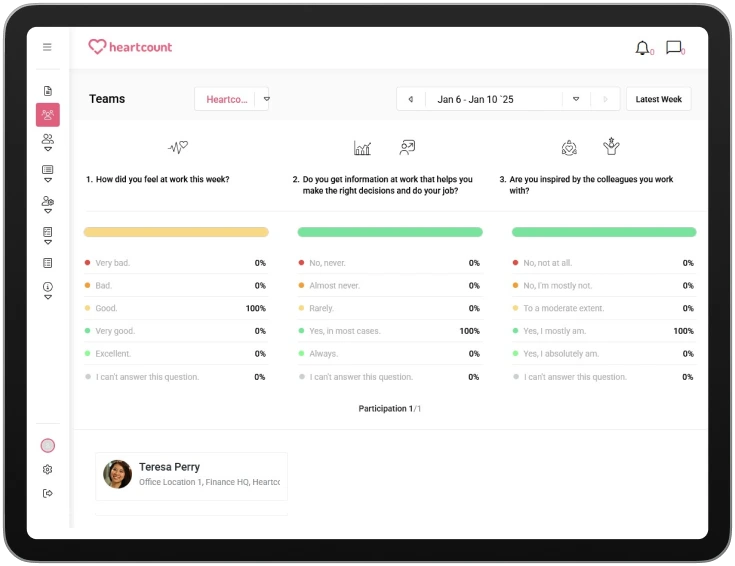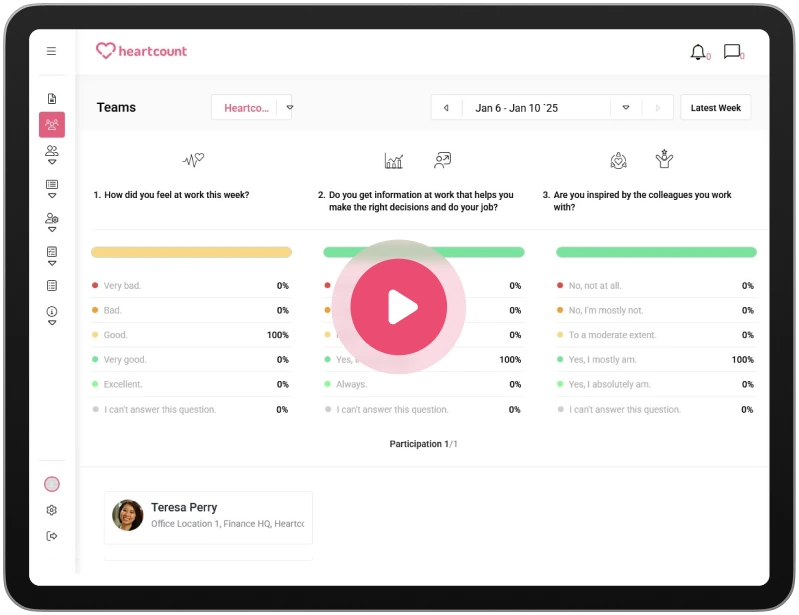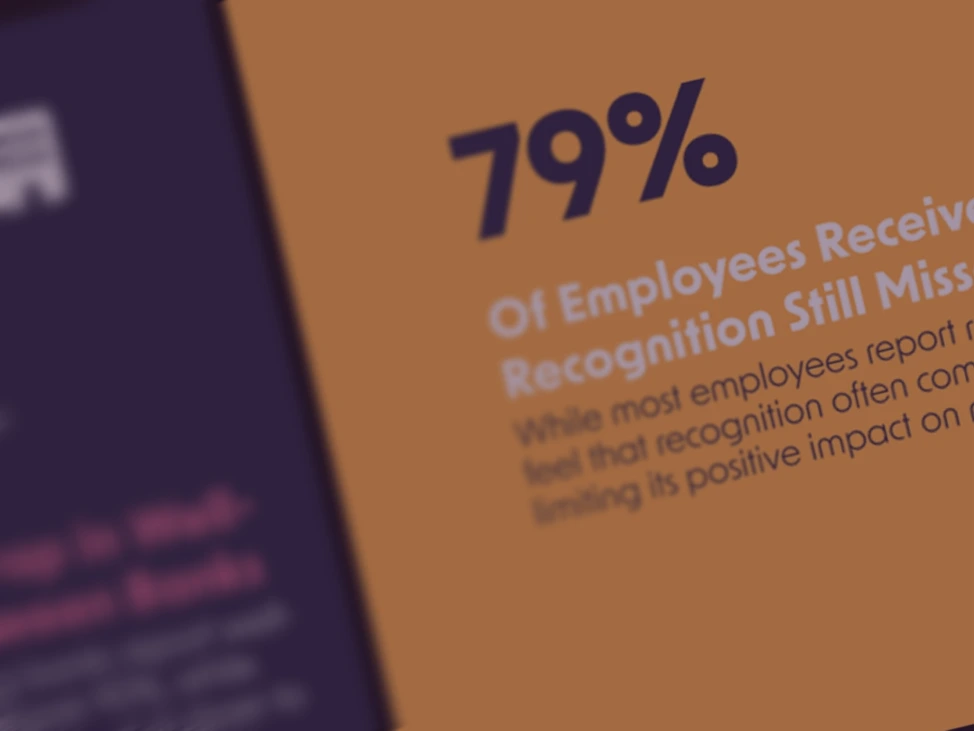7 Employee Retention Strategies Every Company Should Follow

When great employees leave, productivity sinks, morale suffers and other employees struggle with a huge amount of work. Does this sound familiar? Are your employees leaving? Does employee turnover have an adverse impact on your business?
-
1.Why Is Employee Retention Important?
-
2.1. Hire the Right People from the Start
-
3.2. Develop a Great Onboarding Process
-
4.3. Establish Culture of Feedback
-
5.4. Develop Recognition and Reward Systems
-
6.5. Encourage Employees to Establish a Healthy Work-Life Balance
-
7.6. Engage Your Employees
-
8.7. Invest in Employee Training and Development
-
9.Wrap Up
When great employees leave, productivity sinks, morale suffers and other employees struggle with a huge amount of work. Does this sound familiar? Are your employees leaving? Does employee turnover have an adverse impact on your business?
Why Is Employee Retention Important?
The most savvy leaders in the world know that it is much more cost-effective to keep a current employee instead of hiring a new one. It’s not enough just to hire a new talent – the real value comes in retaining these superminds for many years to come. Otherwise, companies are only spinning the wheel, replacing the new people as soon as they hire them.
This brings many costs which can be categorised into three groups: Separation costs (immediate costs like severance pay, unemployment insurance claims, etc), recruitments costs (when an employer is searching for new talent to fill the position, the cost of training the new employee, etc.), productivity costs (the hours of productivity the company loses).
So, if you want to stop your employees from leaving, the best thing you can do is to make them happy at work. How do you do that? Here are the best 7 employee retention strategies to help you improve employee retention.
1. Hire the Right People from the Start
When creating your business culture, one of the ideas for employee retention is to focus on employing people who can easily fit into the company, and who nurture the same values as the company does. Why? People who do not share the same beliefs and who are not driven by the same things as the company tend to feel dissatisfied and unfulfilled after some time working.
This is why it is essential to clearly communicate the ideas and goals of the company to the new employee and what is expected of them along the way. Also, you need to make sure they will not change their attitude nor mindset as this brings changes that can affect the company in a negative way.
COLLECT
2. Develop a Great Onboarding Process
Onboarding is one of the most innovative employee retention strategies. In a nutshell, it is a process of helping new hires adjust to both social and performance aspects of a new job and it can maximise an employee’s lifetime value. During the process, people teams can help reduce people’s anxiety and make them feel comfortable, close and connected to the community and supported to do their best work.
This is why it is imperative not to make any mistakes and conduct a more employee-centric onboarding experience at your organisation. A successful onboarding process will determine the way people will feel at work in the future.
3. Establish Culture of Feedback
Providing your employees with regular feedback on their performance can help improve employees retention and in turn improve your business. Letting your employees have a clear picture of what they are good at and what they need to work on is invaluable information that can help them make necessary changes, progress in their career and ultimately feel happier at work.
Also, employees need to be able to speak openly about problems and give their own feedback to the management when they feel that something is bothering them. By combining these two employee retention ideas you can achieve excellent results and stay on track for career objectives.
4. Develop Recognition and Reward Systems
While businesses want to get more from their employees, their employees are looking for more out of them. If you want to build a thriving company culture where personal and professional achievement is appreciated and valued you need to develop a reward and recognition program to motivate your employees to keep up the good work and produce even better results.
For example, when a certain employee does an outstanding job and when a client praises his or her work, it’s imperative that you as an employer recognise that effort and reward it properly. This is one of the effective employee retention techniques you will certainly want to implement in your culture.
UNDERSTAND
5. Encourage Employees to Establish a Healthy Work-Life Balance
As an employer, you are not solely responsible for providing your employees with a healthy work-life balance. However, what you can do is encourage them to do as much as possible to establish and nurture their own balance. In this way, they will be able to dedicate more time to their personal life and recharge their batteries which will result in achieving better results at work.
Promoting a healthy work-life balance will reduce the probability of employee burnout and boost their productivity thus making them feel more satisfied. Ultimately, this will significantly benefit the company in the long run.
6. Engage Your Employees
Engaged employees are the ones who will wholeheartedly invest their effort to help the company succeed. Today’s leaders must constantly focus on the growth of their teams and the strengthening of their capabilities to make them more effective.
One of the employee retention strategies to do that is to keep them engaged and stimulate them to be the best versions of themselves. By organising a wide range of activities such as team buildings, workshops, group gatherings, socially responsible events and others, people will have more chance to get to know each other, connect and make meaningful relationships that go beyond work-related communication.
By creating a circle of friends, they are less likely to leave the company and more focused on reaching their maximum potential.
ACT
7. Invest in Employee Training and Development
One of the reasons why employees decide to leave the company at some point is because they no longer feel they can improve their knowledge and experience. To make them feel they advance in their career, you need to focus your efforts on organising knowledge-sharing events like conferences and workshops where they will have a possibility to share and gain invaluable knowledge that will help them move up their career ladder.
Also, by implementing these kinds of employee retention ideas the company shows that they care about employees achievement, personal and professional well-being and that they will do all what’s in their power to build a culture of happy employees.
Wrap Up
Before you start developing a plan on how to implement all these strategies to keep your employees from leaving, you need to consider your company’s ecosystem. Which of these employee retention techniques you will implement and which of them will lead to amazing results depends solely on the current situation in your own company.
It’s vital to listen to your employees and work constantly on keeping them. Also, it’s important to keep in mind that implementing these employee retention strategies will only make sense if it is done continuously and not periodically.












